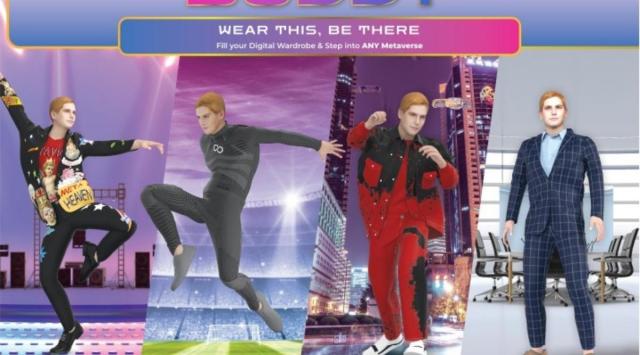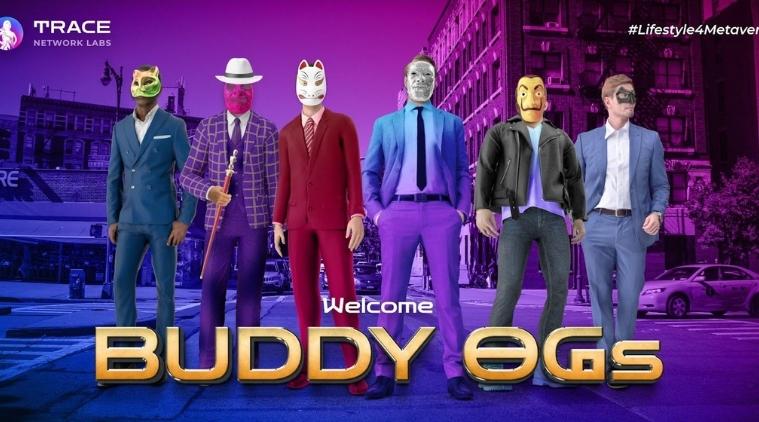‘Equality, accessibility and inclusivity’: CEO Trace Network Labs gives sneak peek into metaverse of avatars
In the metaverse, every avatar will be customised according to their creators' needs, Rao tells indianexpress.com.
 Avatars are the bridge connecting real and virtual worlds seamlessly—powered by blockchain. (Photo: Trace Network Labs)
Avatars are the bridge connecting real and virtual worlds seamlessly—powered by blockchain. (Photo: Trace Network Labs)“Avatars are not just about the people, it is about self, identity, emotions, and relations, and exploration of every aspect in a safe setting.” Lokesh Rao, the co-founder and the CEO of Trace Network Labs is very clear about the new inhabitants of the Metaverse.
For the unversed, metaverse is a shared virtual space that is hyper realistic, but also immersive and interactive, thanks to the augmented reality (AR) and virtual reality (VR) technologies it will thrive on. Metaverse is posed to reflect the real-world, albeit digitally. However, it is not aimed to replace reality, rather what it aims to do is to enhance the digital space that we see today.
In the metaverse, every avatar will be customised according to their creators’ needs, Rao tells indianexpress.com. What makes metaverse avatars unique, from lets say the ones you create for Sims (the game) or Second Life, is that these are now backed by non-fungible-tokens (NFTs). “Imagine your avatar completely designed by you, which looks like you (or not), and completely owned by you,” Rao underlines, adding, “avatars are the bridge connecting real and virtual worlds seamlessly—powered by blockchain.”
Rao explains that once you create an avatar, it is stored in the form of NFTs, which means you have exclusive ownership on the blockchain — this concept of ownership is another unique aspect of the Metaverse. “Nobody can steal, edit or have any control over your avatars…this is what gives you a sense of identity in the metaverse.”
NFTs are blockchain-based records of digital identity which once recorded cannot be modified or edited, making them immutable. “It is an effective solution to enable stable and secure digital identity in the Metaverse. A user in Metaverse can verifiably own an avatar that is distinctly unique and identifiable. Users also own the full commercial rights to their respective avatar(s),” he elaborated.
 Lokesh Rao, CEO and co-founder of Trace Network Labs.
Lokesh Rao, CEO and co-founder of Trace Network Labs.
Rao shares an interesting formula for understanding the use of NFTs in the metaverse. “NFTS = AVATARS = US IN THE METAVERSE”.
However, identities in the metaverse can be tricky— imagine constructing one for every metaverse you enter. Rao says “users will have various choices to create a digital identity, they want their avatar to look like them it’s possible, they want their avatars to be completely different that’s possible too.”
These NFT-based avatars can commute between metaverses. “So, practically you don’t need several identities, like you require on centralised platforms like Facebook, Twitter, etc. You need only one identity, which can be used across different metaverses,” he explained. “With one Metaverse account, users will be able to log into different metaverse platforms. These platforms can access the NFTs stored in the user’s Metaverse wallet.”
Avatars are inclusive
Rao believes the digital identities created by avatars are devoid of any prejudices and bias, opening up wide avenues for differently abled people for instance. Avatars have helped differently-abled people find their partners or interact freely in the metaverse. “People in wheelchairs can walk and roam around with others in the metaverse, without feeling left out,” Rao adds. “Avatars are inclusive, their facial features, skin colour are not reflected in the metaverse. Avatars encourage you to be yourself without being bothered about your looks, colour or other aspects.”
For people with speech disabilities, a sign language avatar is also possible. “Sign languages will have subtitles making it easier for others to understand without having any knowledge of sign language,” he adds.
On the gaming front, Rao says avatars in the metaverse will completely change the gaming industry. “Visual storytelling, and digital celebrity culture is going to be largely influenced by digital avatars. In future, personalised digital assistants such as Google Assistant and Siri can be completely replaced by avatars.”
Meanwhile, several companies are letting individuals create and own avatars that can apply for jobs and build careers in the metaverse—and earn real money for their owners.
‘Demand for customisation to increase’
According to Rao, metaverse is almost limitless—and the best part is it is ‘customisable’. He calls the metaverse users artists who can now design their own world. “Metaverse will create a huge demand for the real versions of virtual items such as fashionable clothing, real looking avatars, customisable virtual real estate and luxury and lifestyle brands.”
 BUDDY lets users create a metaverse agnostic, real looking avatar minted on blockchain. (Photo: Trace Network Labs)
BUDDY lets users create a metaverse agnostic, real looking avatar minted on blockchain. (Photo: Trace Network Labs)
“BUDDY, for instance, lets users create a metaverse agnostic, real looking avatar minted on blockchain, that will have the unique ability to move from one metaverse to the other — akin to a passport for virtual worlds,” Rao says. Trace’s MetaBox enables users to create, customise and co-own luxurious and immersive real estate in metaverse. “We would also let people create their own metaverse unit from the platform to collaborate with other people sitting in different geographies. Imagine yourself having a get together with your friends in your virtual house,” Rao adds.
“Undoubtedly, these avatars will eventually become an integral part of our lives and will define who we are. Our identities depend on how we are, what we say, how we dress, and how we interact. Thus, avatars increase equality, accessibility and inclusivity.”







